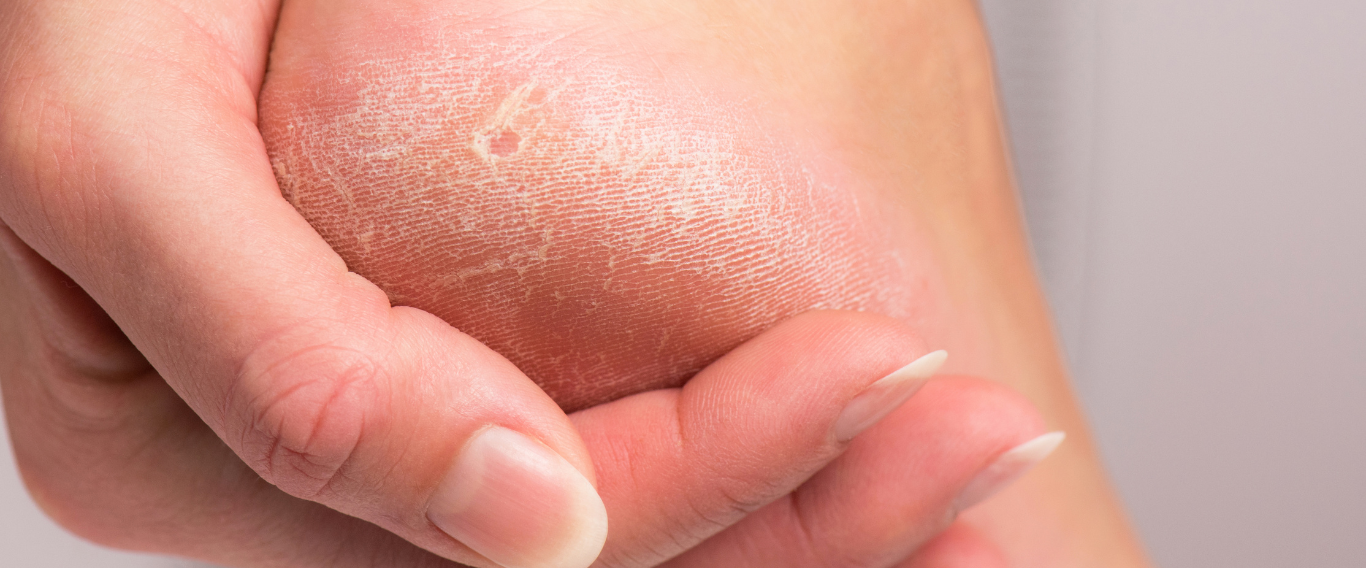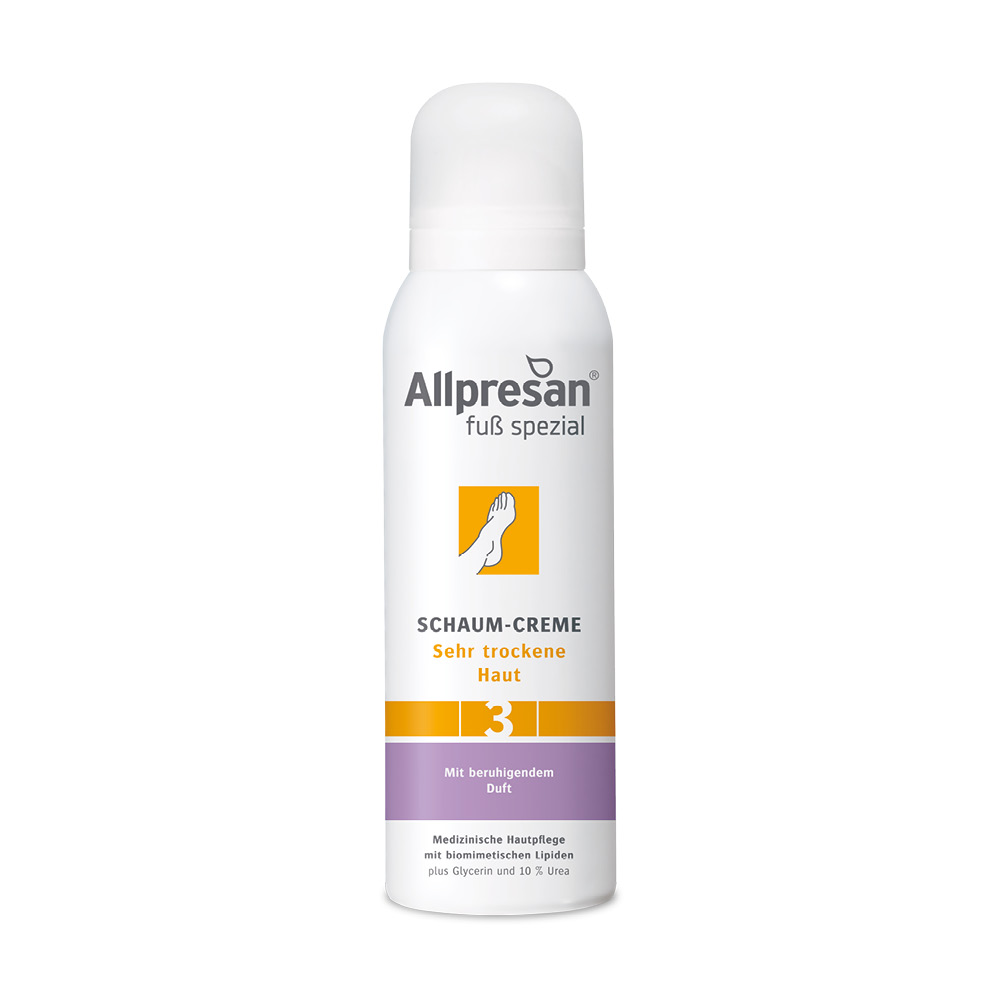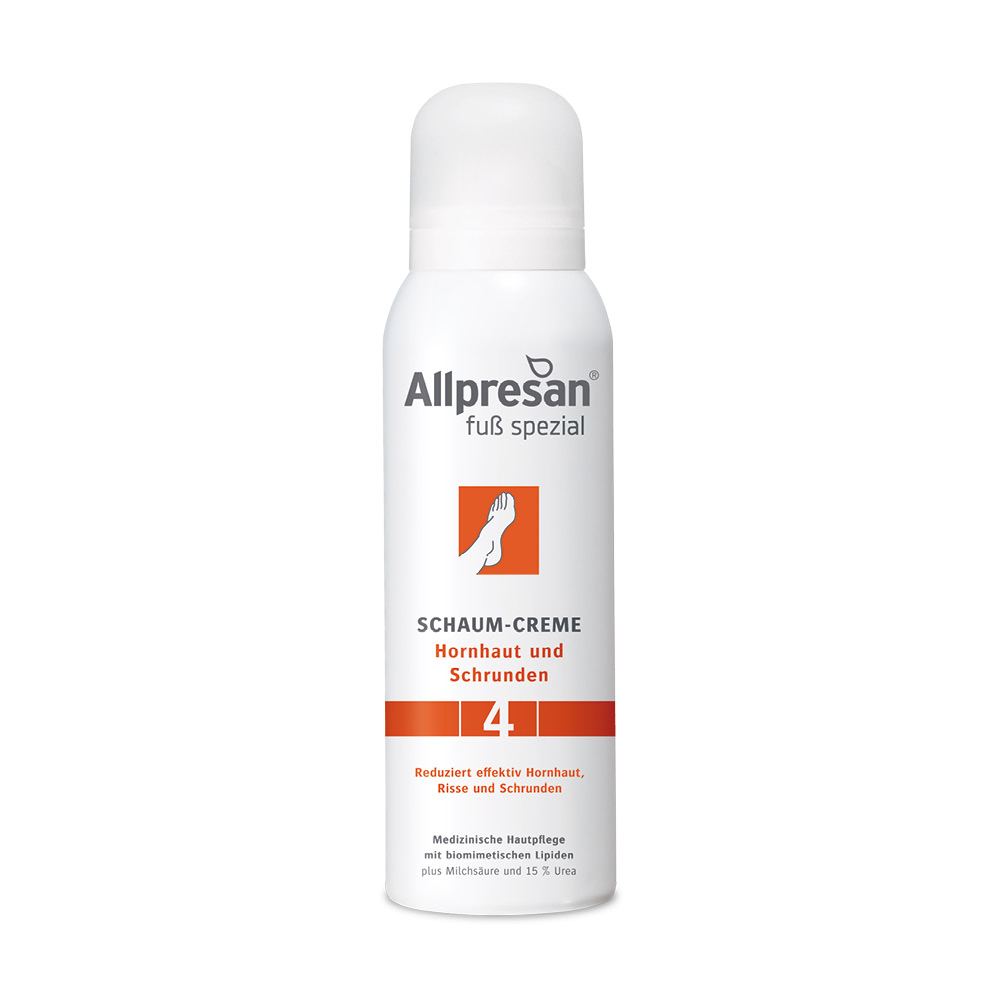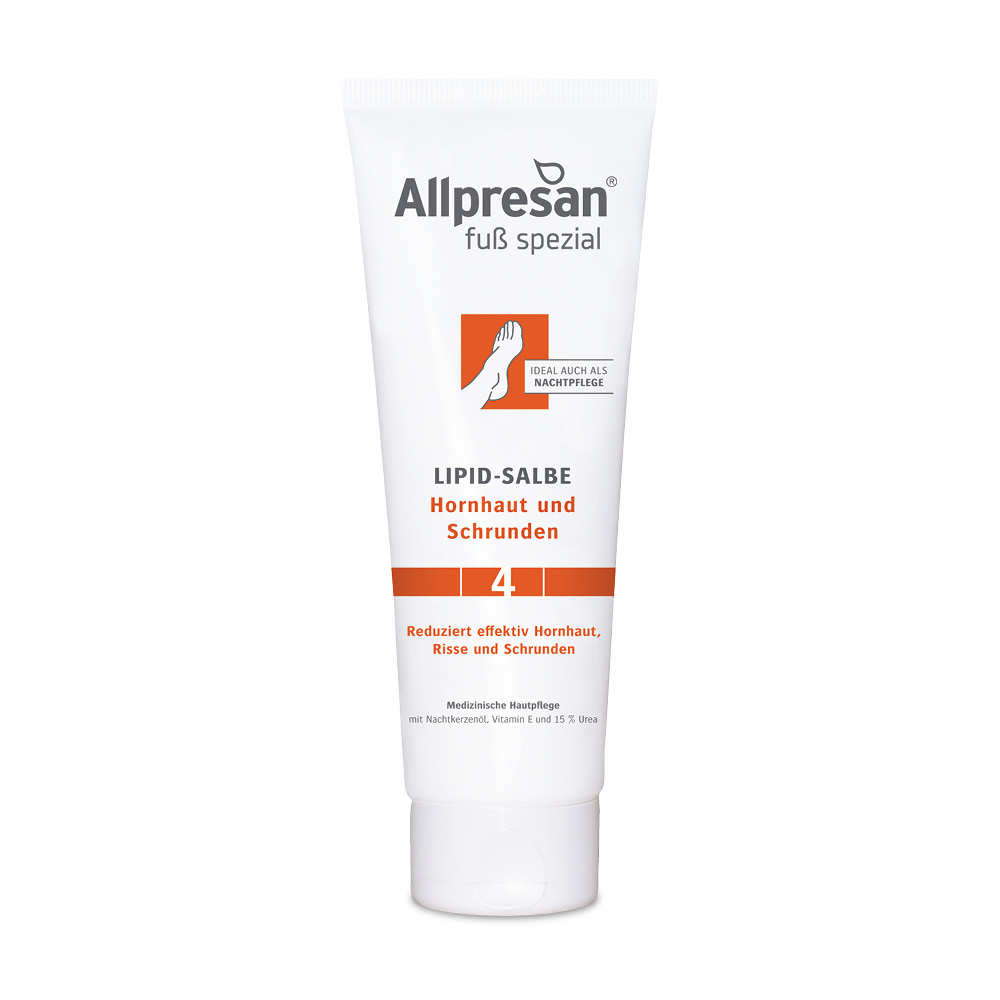Calluses & cracks - an end to cracked heels
Our feet are particularly sensitive to dryness as they have fewer sebaceous glands than other parts of the body. This deficiency promotes the development of rough, brittle skin. In addition, our feet are constantly exposed to great pressure. The skin reacts to constant pressure and friction by forming calluses. Calluses are less elastic than soft skin. This is why calluses crack more quickly, which can result in fissures and rhagades. Calluses are therefore not only a cosmetic problem, but can also be painful and damage the skin's natural barrier function. This makes it easier for bacteria and viruses to penetrate the skin. The risk of infection increases. To minimize such risks, it is essential to take targeted care of dry calluses in order to prevent the possible consequences. Regular care with moisturizing and lipid-rich products is essential to keep dry and cracked feet healthy and supple in the long term. If you are affected by calluses and cracks, care products with a high urea content and lactic acid are recommended, as these have a callus-reducing effect.
The stages of development of calluses and cracks on the feet
Calluses and cracks can be caused by various factors. Dry skin, excessive strain, incorrect footwear and genetic predisposition are among the most common triggers. By understanding the causes, you can better develop appropriate care and prevention strategies. Find out more about the development of calluses and cracks and how you can prevent them effectively.
Lightly dry skin, slight feeling of tightness and rough skin areas
Our tip: If you have demanding skin that is subject to dryness, you should make sure you use care products frequently. Products that provide the skin with intensive moisture and at the same time boost the skin barrier are particularly suitable. This immediately increases the skin moisture and prevents further moisture loss - because supple skin is more resistant to pressure than dry, brittle skin.
Dry skin, rough, brittle and flaky skin
Calluses are a normal protective reaction of the body to excessive pressure. In moderation, it is therefore not a terrible situation. It becomes critical when the skin becomes so calloused that it becomes inelastic and tears. This can lead to infections and is also usually painful. But it shouldn't even get that far. Foot care products with a high urea content help to reduce calluses. This effect is supported by glycerine. At the same time, urea and glycerine moisturize the skin, helping to increase suppleness and thus the skin's resistance to pressure.
Very dry skin, sensitivity to pressure from small cracks to burning, itching and bleeding or even severe tension pain from deeper cracks
Our tip: If you already have cracks, it is essential that you visit a foot professional to treat them. The foot professional will recommend an accompanying treatment that will help to restore the skin to a healthy condition.
Why do calluses form on the feet?
The formation of calluses is basically a protective reaction of the skin. They often appear on the soles of the foot, heels or the outer edge of the toes. Calluses develop in areas where the skin is subjected to the greatest pressure and friction. If the callused areas remain untreated, the feet quickly appear unkempt. If the thickening continues to increase, this can also lead to painful cracks on the foot and cause further problems.
Effective treatments for calluses and cracked skin
There are various ways to soothe and relieve calluses and cracks. From creams and ointments to foot baths and medical procedures - find out about the many options for treating these foot problems.
Steps to prevention: How to avoid calluses and cracks
The best way to prevent calluses and cracks is through prevention. By taking proper care of your feet, choosing the right shoes and avoiding excessive strain, you can minimize the formation of calluses and cracks. The following products help to care for dry skin, prevent calluses or gently remove calluses.
Noticeable results in just 5 days: 90% of users recommend smoother skin.
Well-groomed feet, healthy steps: expert tips for foot care
Groomed feet contribute significantly to general well-being. In addition, the skin of well-groomed feet is more supple and elastic than the skin of dry feet. Supple, elastic skin is more resistant to pressure and friction. With the right care tips and products, you can take optimum care of your feet and prevent foot problems. Discover expert advice on daily foot care and find out how to keep your feet happy and healthy - for an active and pain-free life.
As we age, our skin tends to become increasingly dry, especially on our feet. It is therefore crucial to moisturize daily as this helps to increase the skin's resilience. This can prevent the formation of calluses and cracks. In extreme cases, dry skin can develop cracks, which are potential entry points for germs and viruses.
OUR TIP: We recommend the callus reducing cream as a 14-day treatment for severe calluses. Simply apply to the calloused areas with the practical applicator sponge and after a short time the calloused areas will become softer and the skin will regenerate.
For individual care: Experts' advice on treating calluses and chapped skin
Everyone's feet are unique, and so is the treatment of calluses and cracks. With individual expert advice, you can address your personal needs and develop an effective treatment strategy.




